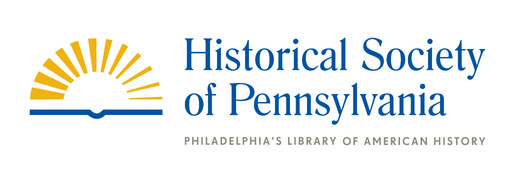
Almshouse records
Collection Am.3225
1767-1768, 1837(0.16 Linear feet ; 3 volumes)
Table of Contents
Summary Information
- Repository
- Historical Society of Pennsylvania
- Creator
- Almshouse and House of Employment (Philadelphia, Pa.)
- Title
- Almshouse records
- ID
- Am.3225
- Date
- 1767-1768, 1837
- Extent
- 0.16 Linear feet ; 3 volumes
- Author
- Finding aid prepared by Lindsey Schwartz.
- Sponsor
- Care of this collection was supported in part by a grant from the Pennsylvania Historical and Museum Commission and by the Young Friends of HSP.
- Language
- English
- Abstract
- The City Almshouse and infirmary, established in Philadelphia in 1732, provided "shelter, support, and employment for the poor and indigent, a hospital for the sick, and an asylum for the idiotic, the insane, and the orphan." Successor institutions that have carried on its services have been Blockley Almshouse, Philadelphia General Hospital, Philadelphia Hospital for Mental Diseases (Byberry), Home for Indigent (Holmesburg). The record books are: journal, 1767-1768; daybook, 1767-1768; and statistics, 1837. Statistics covers the women's part of the Almshouse, listing name, age, birthplace, slave or free, marital status, probable cause of poverty, temperance habits, and employment, with comparative summaries for men and women.
Preferred citation
Cite as: [Indicate cited item or series here], Almshouse records (Am .3225), Historical Society of Pennsylvania.
Background note
The City Almshouse was the first public poorhouse in 18th century Philadelphia. From its founding in 1732, it was located in the vicinity of Spruce, Pine, 3rd, and 4th streets. In response to a growing homeless population and escalating stigma against the poor, it annexed a larger location at 10th and Spruce streets in 1767. It assumed a new name, the Bettering House, reflecting the impetus for a corrective institution as the ideology of the criminalized poor became more pervasive. Within this trend, the almshouse shifted its focus away from out-relief (money, clothing, supplies) to increase its residency capacity and ability to provide “total” care. “Total” care implied institutionalization with the end goal of rehabilitation, complete with uniforms, daily regimens, and employment in various workhouses. As fewer “inmates” proved able for labor, the almshouse assumed more responsibility for the sick, who constituted the high majority of residents between 1804 and 1834.
In face of changing attitudes on poor relief, the almshouse maintained a benevolent outlook in some respects, particularly special attention to unmarried pregnant women, who were turned away by the Pennsylvania Hospital and the elderly. However, they were also guilty of uncaring treatment, including lax classification of residents, denial of privacy, and inhumane treatment of the mentally disabled.
Patients were separated by sex and race. Poor Black men relied on public welfare rather than private, and were generally denied “outdoor relief,” making admission to the almshouse their best option for aid. Between 1828-1850, the percentage of Black inmates in the almshouse was nearly double that of those living in the city. Black children constituted a quarter of the youth population in the institution.
The Philadelphia City Almshouse moved to a larger location in 1835. The new Blockley Almshouse implemented an increasingly institutionalized program and was Philadelphia’s primary asylum for the poor for the remainder of the century.
Scope and content note
Volumes 1 and 2 (1767-1768) contain listings of money and material aid given to the poor, including cash, clothing, legal aid, supplies, and burial and travel expenses. There are also records of people being paid for services, including being a wet nurse, grave digging, midwifery, and helping women with their children to other parts of the country. There are several entries helping women whom the Mayor ordered to other regions in Pennsylvania or other states. Volume 2 is the daybook to Volume 1’s journal. The former was the immediate log for these records, and the information was neatly organized and copied into the journal.
Volume 3 (1837) contains a detailed listing of the female patrons of the various sectors of the Almshouse, and a statistics summary comparing the male and female patients and residents. Sectors include the lunatic asylum and the surgical and syphilitic ward. Information on the female patrons include name, age, temperance habits, occupation, health, and probable cause of poverty, including “vicious,” “insanity,” and “increase of family.” Additional remarks on select individuals include “indolent and stupid,” “from prison,” and “melancholy.” Since being born into freedom or slavery is a descriptive category for both male and female patrons, this is likely an account of just the Black patrons of the Almshouse.
Administrative Information
Publication Information
Historical Society of Pennsylvania ; 2020.
1300 Locust StreetPhiladelphia, PA, 19107
215-732-6200
Access restrictions
None. The collection is open for research.
Provenance
Collection was originally a gift of Mrs. Albert Henry Savery to the Genealogical Society of Pennsylvania in 1903. GSP gifted it to HSP in 1967.
Controlled Access Headings
Subject(s)
- African Americans--Socioeconomic conditions--18th century.
- Benevolent Societies--Philadelphia--18th century.
- Poverty, Alleviation of--Philadelphia--18th century.
- Women's history--Socioeconomic conditions--18th century.
Bibliography
Clement, Priscilla Ferguson. Welfare and the Poor in the Nineteenth-century City: Philadelphia, 1800-1854. Fairleigh Dickinson University Press, 1985.
Kaktins, Mara and Sharon Allitt. “The Early Poor in Philadelphia: A Preliminary Report on the Philadelphia City Almshouse Privy Excavation.” Historical Archaeology of the Delaware Valley, 1600-1850, edited by Veit, Richard Francis, and David Gerald Orr, The University of Tennessee Press, 2013, pp. 249-272.
Collection Inventory
| Volume | ||||
|
Journal (1767-1768) |
1 | |||
|
|
||||
|
Daybook (1767-1768) |
2 | |||
|
|
||||
|
Statistics of the Almshouse (1837) |
3 | |||
|
|
||||